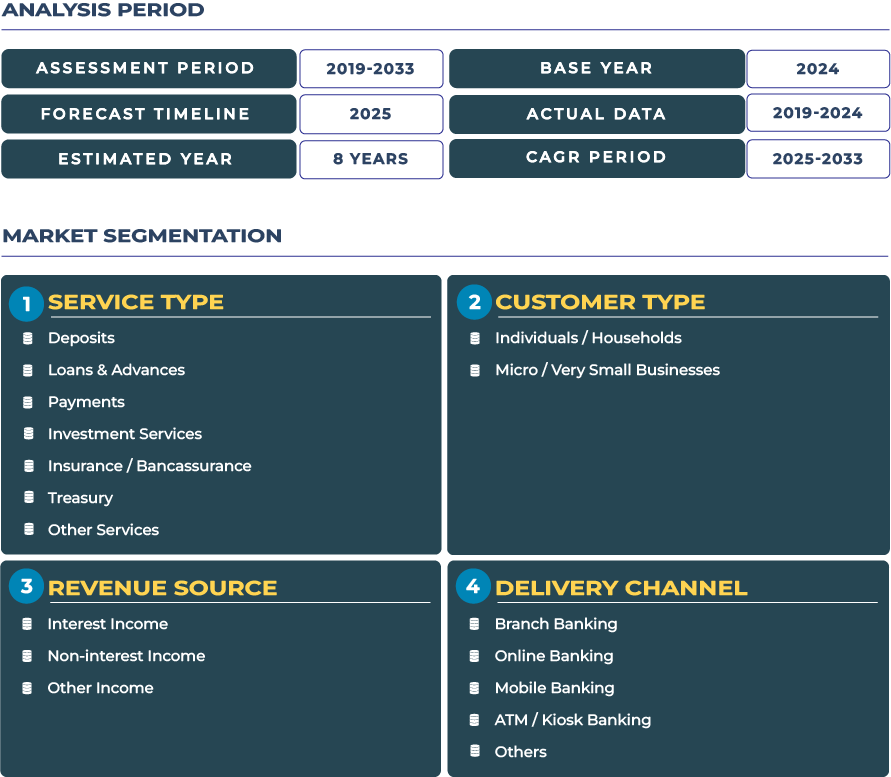Mexico Retail Banking Market Outlook: Mobile-First Banking Leap Driving Inclusive Financial Access
In Mexico evolving retail banking ecosystem, mobile-first strategies and microfinance initiatives are becoming critical enablers of inclusion. With smartphone penetration rising sharply across urban and semi-urban regions, financial institutions are leveraging digital channels to reach consumers previously excluded from formal banking.
Note:* The market size refers to the total revenue generated by banks through interest income, non-interest income, and other ancillary sources.
Against this backdrop, the Mexico retail banking market is projected to expand from USD 50.7 billion in 2025 to USD 68.5 billion by 2033, implying a CAGR of 3.8%. This expected pace outstrips many mature markets, signaling potential upside from digital activation, penetration of credit services, and cross-selling of wealth and insurance products via mobile channels. Traditional banking growth (deposits, consumer loans, mortgages) remains foundational, but the real alpha lies in unlocking the “latent demand”-the under-banked households, micro-businesses, and remittance corridors. Mexico political and economic context is complex: fluctuations in commodity prices, exchange rate dynamics, and volatility in cross-border trade with the U.S. all introduce risk. Moreover, regulatory shifts and external pressures (e.g., global interest rate shifts) influence deposit and credit spreads. Nonetheless, institutions that scale digital infrastructure, foster trust, and tailor microfinance offerings will secure differentiated growth in the retail banking landscape.
Mexico Retail Banking Market Outlook: Mobile-First Banking Leap Driving Inclusive Financial Access
In Mexico evolving retail banking ecosystem, mobile-first strategies and microfinance initiatives are becoming critical enablers of inclusion. With smartphone penetration rising sharply across urban and semi-urban regions, financial institutions are leveraging digital channels to reach consumers previously excluded from formal banking. Against this backdrop, the Mexico retail banking market is projected to expand from USD 50.7 billion in 2025 to USD 68.5 billion by 2033, implying a CAGR of 3.8%. This expected pace outstrips many mature markets, signaling potential upside from digital activation, penetration of credit services, and cross-selling of wealth and insurance products via mobile channels. Traditional banking growth (deposits, consumer loans, mortgages) remains foundational, but the real alpha lies in unlocking the “latent demand”-the under-banked households, micro-businesses, and remittance corridors. Mexico political and economic context is complex: fluctuations in commodity prices, exchange rate dynamics, and volatility in cross-border trade with the U.S. all introduce risk. Moreover, regulatory shifts and external pressures (e.g., global interest rate shifts) influence deposit and credit spreads. Nonetheless, institutions that scale digital infrastructure, foster trust, and tailor microfinance offerings will secure differentiated growth in the retail banking landscape.







